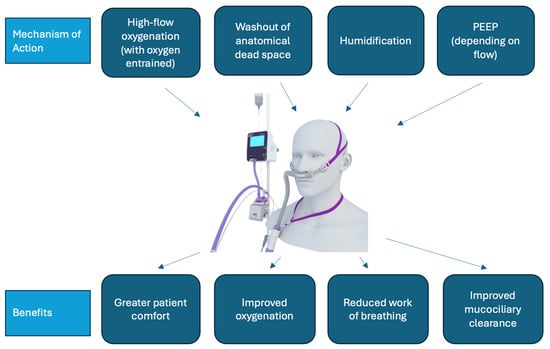In the global carbon cycle, atmospheric carbon emissions, both ‘natural’ and anthropogenic, are balanced by carbon uptake (i.e., sequestration) that mostly occurs via photosynthesis, plus a much smaller proportion via geological processes. Since the formation of the Earth about 4.54 billion years ago,
[...] Read more.
In the global carbon cycle, atmospheric carbon emissions, both ‘natural’ and anthropogenic, are balanced by carbon uptake (i.e., sequestration) that mostly occurs via photosynthesis, plus a much smaller proportion via geological processes. Since the formation of the Earth about 4.54 billion years ago, the ratio between emitted and sequestered carbon has varied considerably, with atmospheric CO
2 levels ranging from 100,000 ppm to a mere 100 ppm. Over this time, a huge amount of carbon has been sequestered due to photosynthesis and essentially removed from the cycle, being buried as fossil deposits of coal, oil, and gas. Relatively low atmospheric CO
2 levels were the norm for the past 10 million years, and during the past million years, they averaged about 220 ppm. More recently, the Holocene epoch, starting ~11,700 years ago, has been a period of unusual climatic stability with relatively warm, moist conditions and low atmospheric CO
2 levels of between 260 and 280 ppm. During the Holocene, stable conditions facilitated a social revolution with the domestication of crops and livestock, leading to urbanisation and the development of complex technologies. As part of the latter process, immense quantities of sequestered fossil carbon have recently been used as energy sources, resulting in a particularly rapid increase in CO
2 emissions after 1950 CE to the current value of 424 ppm, with further rises to >800 ppm predicted by 2100. This is already perturbing the previously stable Holocene climate and threatening future food production and social stability. Today, the global carbon cycle has been shifted such that carbon sequestration is no longer keeping up with recent anthropogenic emissions. In order to address this imbalance, it is important to understand the roles of potential biological carbon sequestration systems and to devise strategies to facilitate net CO
2 uptake; for example, via changes in the patterns of land use, such as afforestation, preventing deforestation, and facilitating agriculture–agroforestry transitions.
Full article
 IJMS
IMPACT
IJMS
IMPACT Applied Sciences
IMPACT
Applied Sciences
IMPACT Sustainability
IMPACT
Sustainability
IMPACT Sensors
IMPACT
Sensors
IMPACT JCM
IMPACT
JCM
IMPACT Materials
IMPACT
Materials
IMPACT Molecules
IMPACT
Molecules
IMPACT Energies
IMPACT
Energies
IMPACT Electronics
IMPACT
Electronics
IMPACT Remote Sensing
IMPACT
Remote Sensing
IMPACT Cancers
IMPACT
Cancers
IMPACT Nutrients
IMPACT
Nutrients
IMPACT Mathematics
IMPACT
Mathematics
IMPACT Foods
IMPACT
Foods
IMPACT Buildings
IMPACT
Buildings
IMPACT Polymers
IMPACT
Polymers
IMPACT Animals
IMPACT
Animals
IMPACT Water
IMPACT
Water
IMPACT Plants
IMPACT
Plants
IMPACT Agronomy
IMPACT
Agronomy
IMPACT Biomedicines
IMPACT
Biomedicines
IMPACT Processes
IMPACT
Processes
IMPACT Microorganisms
IMPACT
Microorganisms
IMPACT Diagnostics
IMPACT
Diagnostics
IMPACT Nanomaterials
IMPACT
Nanomaterials
IMPACT Viruses
IMPACT
Viruses
IMPACT Medicina
IMPACT
Medicina
IMPACT Healthcare
IMPACT
Healthcare
IMPACT Cells
IMPACT
Cells
IMPACT Forests
IMPACT
Forests
IMPACT Agriculture
IMPACT
Agriculture
IMPACT Land
IMPACT
Land
IMPACT JMSE
IMPACT
JMSE
IMPACT IJERPH
IJERPH
 Symmetry
IMPACT
Symmetry
IMPACT Genes
IMPACT
Genes
IMPACT Pharmaceutics
IMPACT
Pharmaceutics
IMPACT Coatings
IMPACT
Coatings
IMPACT Micromachines
IMPACT
Micromachines
IMPACT Pharmaceuticals
IMPACT
Pharmaceuticals
IMPACT Atmosphere
IMPACT
Atmosphere
IMPACT Children
IMPACT
Children
IMPACT Religions
IMPACT
Religions
IMPACT Antioxidants
IMPACT
Antioxidants
IMPACT Life
IMPACT
Life
IMPACT Metals
IMPACT
Metals
IMPACT Biomolecules
IMPACT
Biomolecules
IMPACT Vaccines
IMPACT
Vaccines
IMPACT Education Sciences
IMPACT
Education Sciences
IMPACT Minerals
IMPACT
Minerals
IMPACT Horticulturae
IMPACT
Horticulturae
IMPACT Brain Sciences
IMPACT
Brain Sciences
IMPACT JPM
IMPACT
JPM
IMPACT Bioengineering
IMPACT
Bioengineering
IMPACT




























